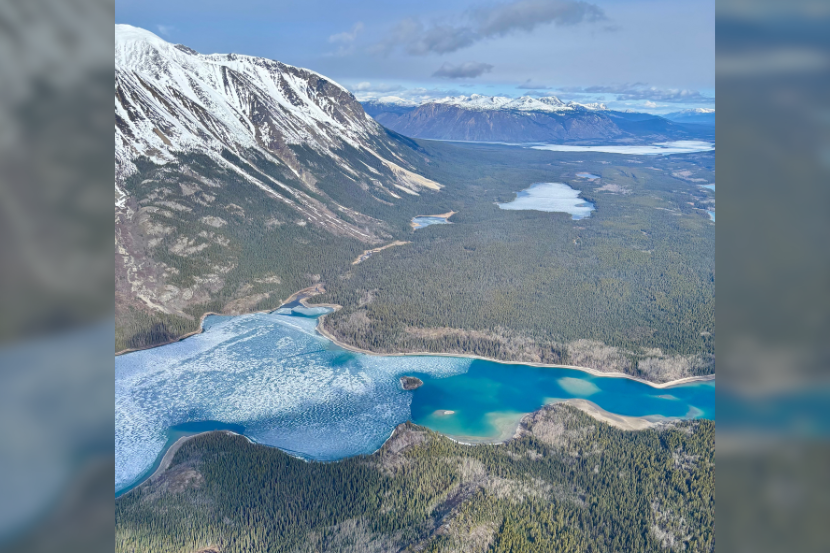The idea for the project emerged shortly after Professor St. Pierre joined uOttawa in 2023. Her colleague and longtime friend Ashley Dubnick, PhD, with Yukon University, reached out with a vision: to work hand in hand with northern communities on issues that matter to them. The Taku River Tlingit First Nation welcomed the collaboration, sharing their concerns about the shrinking glaciers and their impact on fish habitats and freshwater systems. From there, the foundation was laid for a co-developed research project that bridges Western science and Indigenous knowledge systems.
What makes Atlin Lake unique is its geography. The river flowing out of the lake divides it in two, with the southern half still fed by glaciers and the northern half no longer influenced by them. This natural contrast provides an invaluable opportunity for comparison: What do aquatic ecosystems look like with and without glacial input? And more importantly, what does the future hold as glaciers continue to retreat?
Fieldwork is both rigorous and breathtaking. Students and researchers travel by helicopter, install sensors in rivers and take water samples, many of which are analyzed back at uOttawa’s state-of-the-art laboratories. Boats traverse the lake, guided by the Taku River Tlingit First Nation’s Land Guardian program. This is science grounded in place, memory and relationships — where logistics and lived knowledge are just as vital as measuring tools.

The team can now expand their reach with support from ArcticNet. Created under the Networks of Centres of Excellence program, ArcticNet brings together scientists, engineers and professionals across disciplines along with Inuit organizations, northern communities, government agencies and the private sector to study the impacts of climate and socio-economic change in the Canadian North. Thanks to this funding, the researchers are returning in different seasons to observe year-round variations and scaling up their collaboration with more institutions and local partners. From hydrology to ecology, glaciology to geochemistry, the work is intensely interdisciplinary. This will produce a holistic understanding of how these fragile ecosystems function and how we can protect them.
For St. Pierre, one of the most meaningful aspects of the work is the human one. Graduate students are not only conducting thesis work directly tied to questions raised by First Nations partners, but also experiencing science as a service and engaging in a two-way knowledge exchange. After a summer in the program, one undergraduate student even landed a job with Yukon University, staying on to continue the work.
As data begins to flow in, the goal is clear: to feed this data back into the stewardship plans being developed by the Taku River Tlingit First Nation and to support regional conservation efforts through evidence-based insights. The collaboration also supports broader initiatives like Living Lakes Canada and the Yukon’s government-led monitoring programs.
The landscape may be remote, but its significance is global. In the Atlin Lake watershed, a blueprint is emerging — one that blends cutting-edge science with community-led inquiry grounded in the rhythms and realities of the North. And while the lakes are deep and sometimes unpredictable, the trust and shared purpose driving this partnership are steady and strong.
Read more
